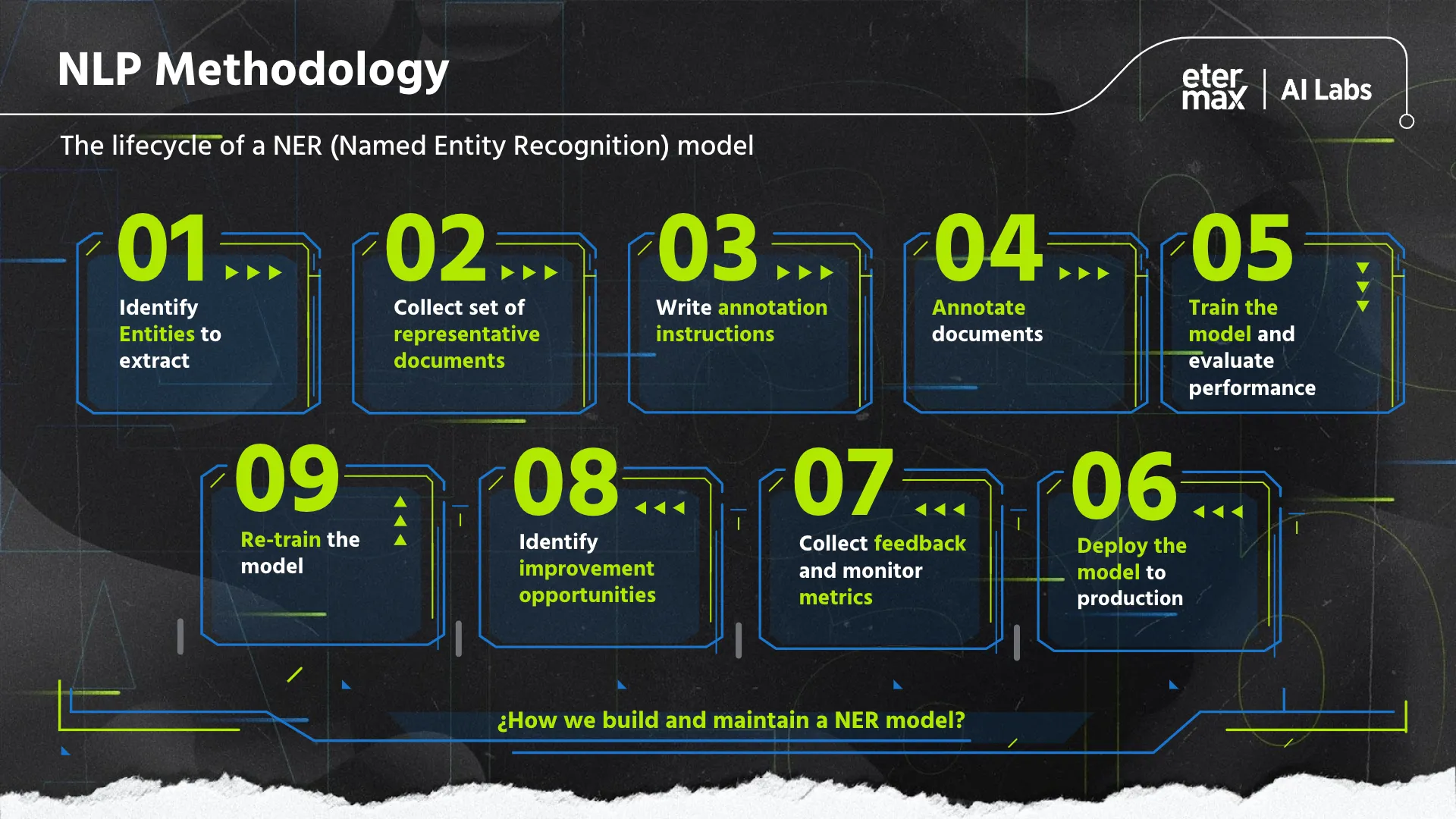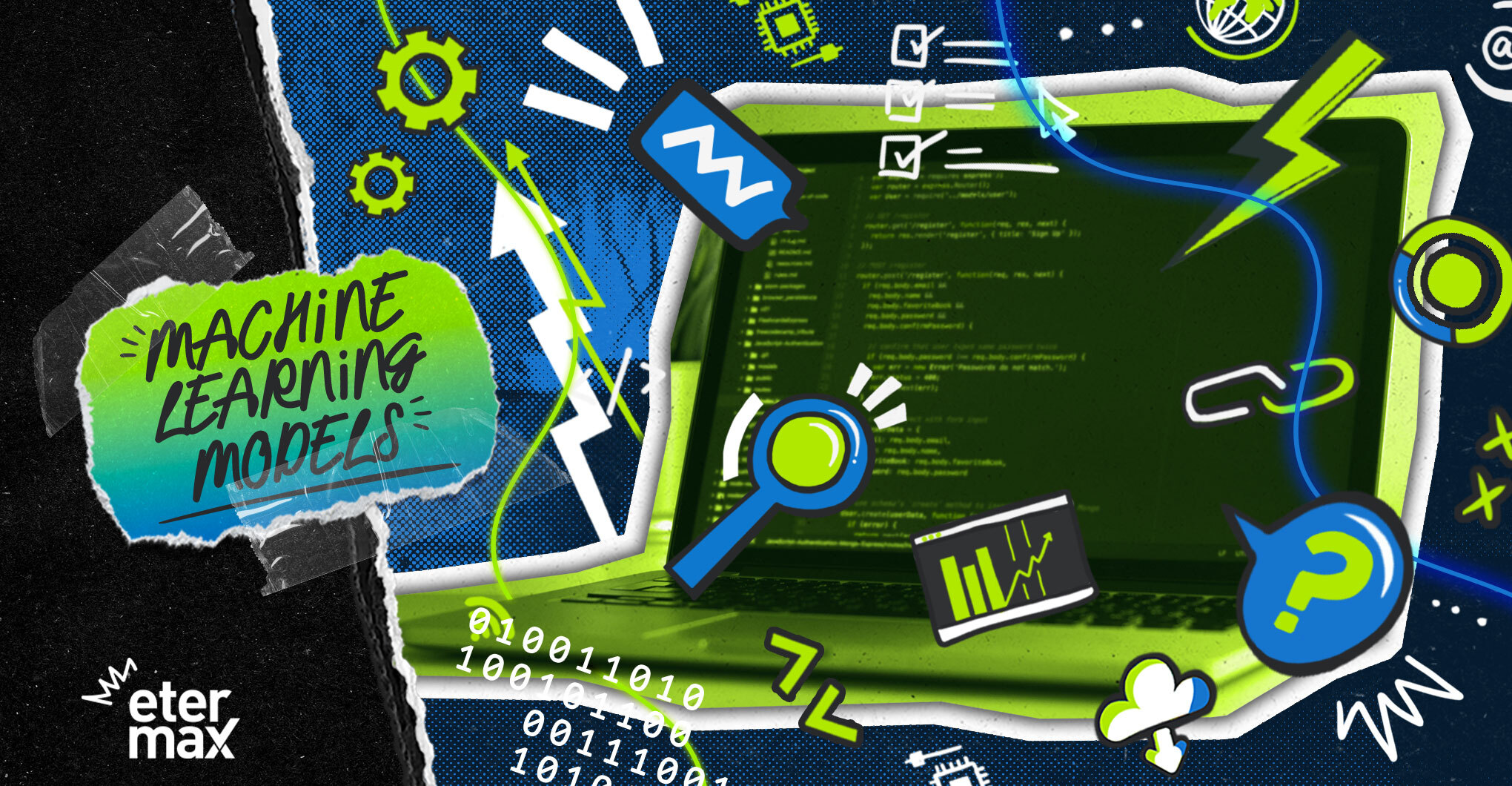Here are the necessary steps for their development with artificial intelligence
By Sara Buch, NLP Analyst, and Federico Wilhelem, AI Consultant at etermax AI Labs
Artificial intelligence applied to language can have a great variety of uses, ranging from instant translation to automatic text generation. These applications are being employed by companies to automate repetitive tasks, speed up decision making, and provide employees and clients with relevant and reliable information. Even if the potential benefits are tremendous in terms of efficiency, productivity, and cost saving, this doesn’t happen as if by magic. Behind all these processes that seem to predict each step we’re going to take, lies the development of Machine Learning models. These are achieved through rigorous processes and methodologies, involving meticulous work carried out in the stages we detail below.

1. Discovery
The first step is understanding the problem we want to tackle and the goal we wish to achieve. At this stage, we must ask ourselves what we want our model to do. Based on our goal we will be able to define the set of data we’re going to work with and its nature: are we going to use written texts? images? voice recordings? Lastly, we’ll ask ourselves about the feasibility and utility of this data: what problems might we face when working with it? What’s the quality of the recordings or images? Is the data sensible or confidential? Does it need to be “cleaned” or enhanced in any way before processing it?
2. Collecting the data: creating a dataset
Once we’ve decided what data we’re going to work with, we need to compile a sufficient number of examples of said data. Ideally, these examples should be diverse so that our model can learn from a varied set of data. It’s important to keep in mind that Machine Learning models “learn” by memorizing and identifying patterns in the training data, so they can only systematize what they have already seen. The more representative our training dataset is, the more prepared our model will be to face new data in the future.
3. Getting down to work: processing, tagging, and training
Now that we’ve collected our dataset, it’s time to explore it, find out what we have, and process it or “prepare” it so that the NLP algorithms can make the most out of it. Some of the common tasks at this stage are tokenization (separating a piece of text in smaller units like sentences and words), lemmatization (reducing the number of words by considering them to be one dictionary entry: “is”, “are”, “were” all belong to BE), and stemming (similar to the former mechanism, but it only considers the stem of the word: “finally”, “final”, “finalized” share the same stem *fina.)
Now it’s time to annotate or tag our data. If, for example, we’re training a model that analyzes feelings in comments posted on social media, we have to tag the selected comments as positive or negative. The tagged data will function as the “instructions” our algorithm will follow to train our model and allow it to predict whether a new comment is positive or negative.
4. Measuring quality
We already have a model trained to make predictions, but how can we tell if it’s working well? Quality must be reflected in a metric or indicator that’s aligned with the objectives we initially set. On the one hand, we must define what we consider to be hits and mistakes, and on the other, the metrics we want to prioritize. There’s a vast variety of metrics and assessment protocols available nowadays, so we have the opportunity to choose the ones that meet the needs of our project. This last stage is key, because it will allow us to spot opportunities for improvement to continue to train and enhance our model.
Understanding data, collecting it, tagging it, and measuring the results with reliable metrics are the first steps to put into effect a Machine Learning model for NLP, but there’s more. Once we have our model, monitoring and retraining it periodically to achieve a better performance is a key aspect to help our clients gain competitive advantage with Artificial Intelligence. And that’s the added value etermax AI Labs brings to the table.
